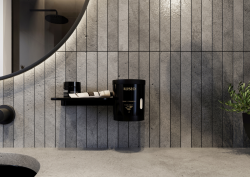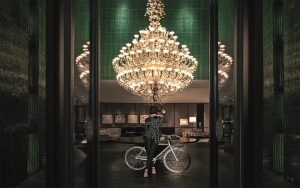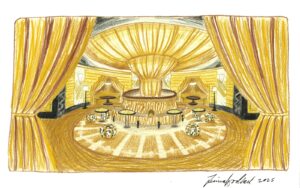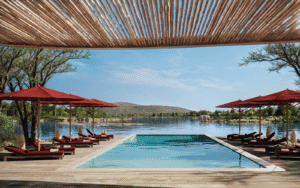The second AXOR Futures has gone live, drawing on the experience of creators, designers and philosophers. The conversation between Philippe Starck, Anne Lise Kjaer, Chung-Yi Yang and Rebecca Weigold dug deep into the concept of conscious luxury, sustainability, and its implications for the design process…

Hansgrohe Group’s design brand AXOR recently launched its digital platform AXOR Futures with the aim of promoting discussion and offering insight into new ways into new ways of thinking about societal influences on interior design.
The most recent of these was the second event in the series and addressed long-lasting design and conscious consumption with guests speakers Philippe Starck (Architect, Creator and AXOR Design Partner), Anne Lise Kjaer (Futurist and Founder Kjaer Global), Chung-Yi Yang (Partner ACPV Citterio Viel),) and Rebecca Weigold (Team Leader Green Company Initiative, Hansgrohe Group). The discussion was introduced and moderated by Anke Sohn Head of Global Brand Marketing AXOR.
“Resources here on earth are finite, unlike the multitude of our ideas, desires and aspirations,” said Sohn. ” This also means that our attitude towards design is changing. We want it to be meaningful and long-lasting. Our primary goal is to combine our outstanding designs with excellence in manufacturing and innovative technology to create products that last a lifetime. Promoting conscious consumption and long-lasting design is our contribution to a more sustainable world. And in this spirit, we have always designed beyond time and are entering into a new dialogue with creative minds from around the world.”
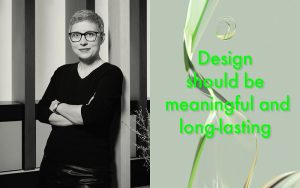
Image credit: AXOR
The contributions from everyone on the panel took us through several of the key issues being grappled with in the design world across the board. Introducing the concept, Kjaer, a renowned futurist and author who has lectured at Cambridge university and MIT, and speaks regularly at events such as TEDx, touched on questions of changing values and lifestyle, and how a more considered approach to design can harness these changes into a more long term – and a more sustainable – outcome. “The true value of things will be extremely important” said Kjaer. ” We need better products, not more products”
Taking the conversation more directly into the built environment, partner at the architecture studio, Partner ACPV Citterio Viel, Chung-Yi Yang discussed the need to improve the quality and use of interior and exterior spaces. Looking at sustainability from an architect’s perspective Yang emphasised the importance of water conservation in projects, as well as the regenerative aspects of her discipline. “Building can make the world a better place” stated Yang. ” Architecture and interior design have an enormous amount of regenerative potential, and a resource like water is too valuable not to be used in the best possible way.”

Image credit: AXOR
Designer Philippe Starck has been collaborating with AXOR for more than 20 years, and the first range designed by the designer remains as relevant today as it did when it was launched. Thus the concept of design longevity became central to a discussion on sustainability. This was made clear by Starck who asserted that good design is in fact about creating nothing superfluous. It is about respecting and understanding the function of an object and working in collaboration with engineers and technicians to ensure that all of the functionality is part of the design. Starck went on to discuss his belief in the importance of uniting luxury and ecology with aesthetics—an ongoing process that not only includes his previous work with AXOR, but importantly will remain an important part of all upcoming projects.
Finally the conversation concluded with some input from Rebecca Weigold, an expert in environmental management who works at the Hansgrohe Group, where she advises departments and project teams on implementing social and environmental sustainability. During her conversation with AXOR’s Anke Sohn, Weigold spoke about the brand’s eco-design guidelines and ecological commitments moving forward. Weigold emphasised the need for a holistic business model when taking on sustainability. “Production must be as green as possible,” said Weigold. ” The social perspective of sustainability needs to be considered with social conditions in manufacturing being part of the solution.”
As moderator Sohn drew the conversation to a close, what is clear is that design needs to be both considered and long lasting for it to be sustainable. While these conversations are important, conversations need to inform action, not only of design, but on every level of the manufacturing, marketing and distribution process. Designers, architects, engineers, cannot look at their individual corners of the process in isolation, everything is interconnected, and now more than ever we need to address design holistically.
Hansgrohe is one of our Recommended Suppliers and regularly features in our Supplier News section of the website. If you are interested in becoming one of our Recommended Suppliers, please email Katy Phillips.
Main image credit: AXOR






